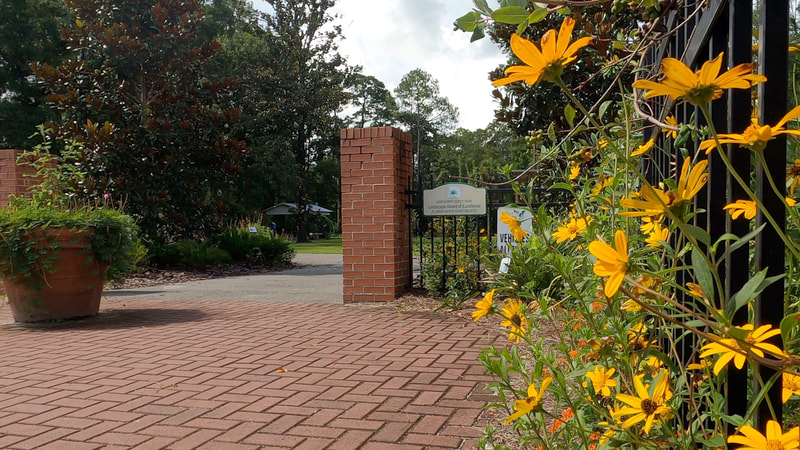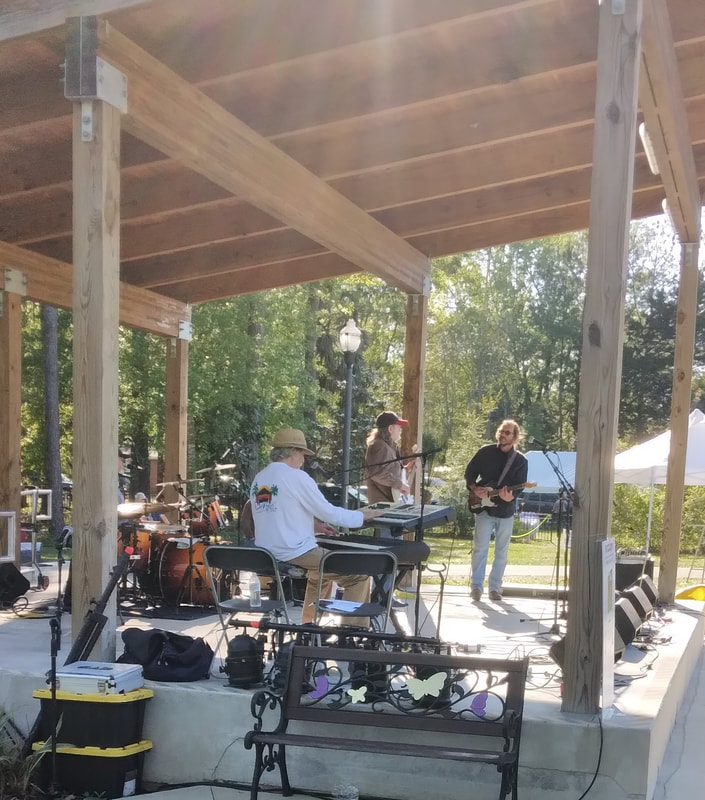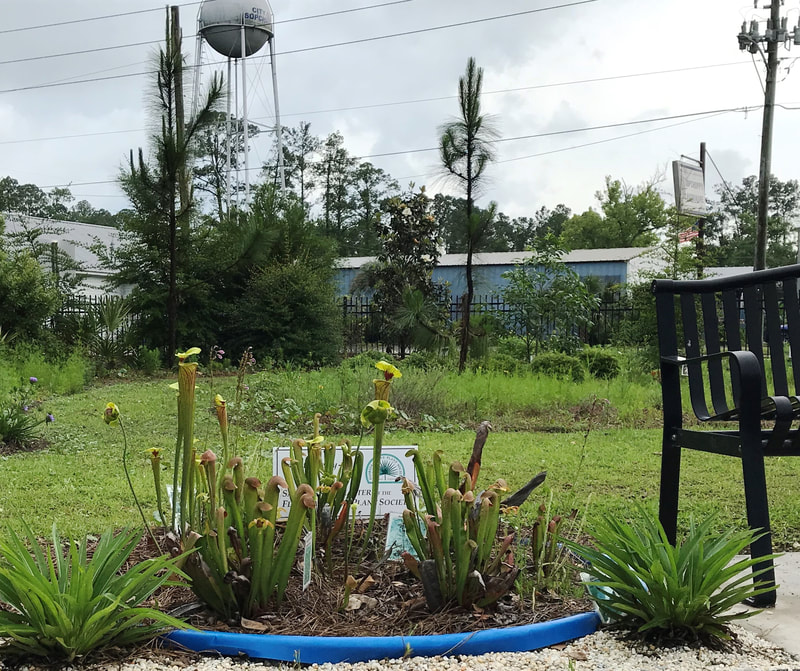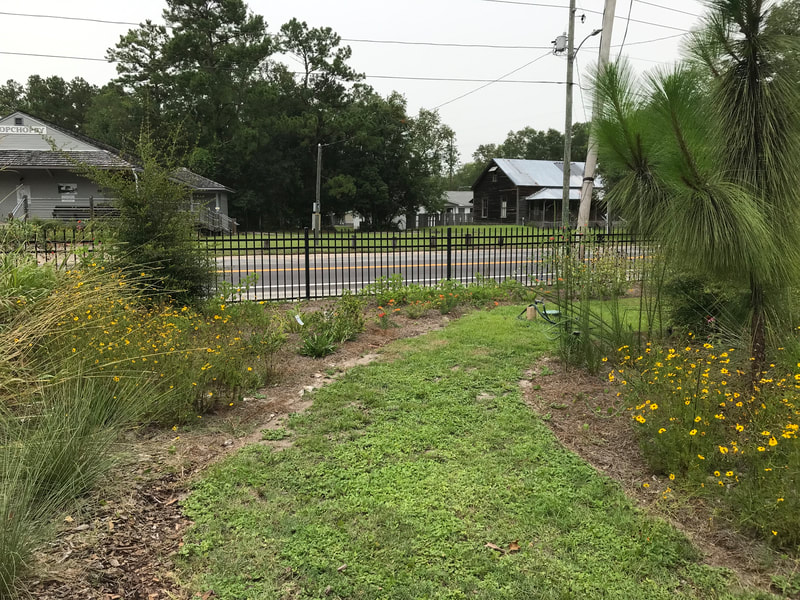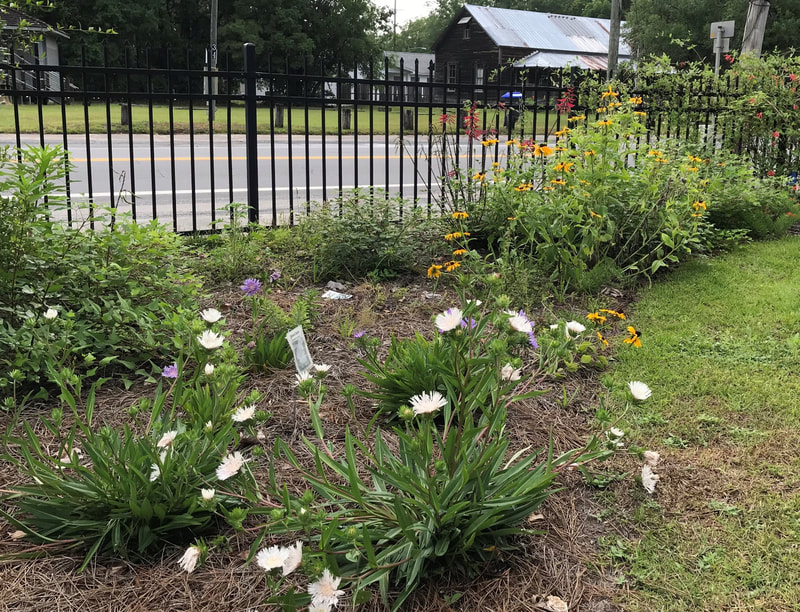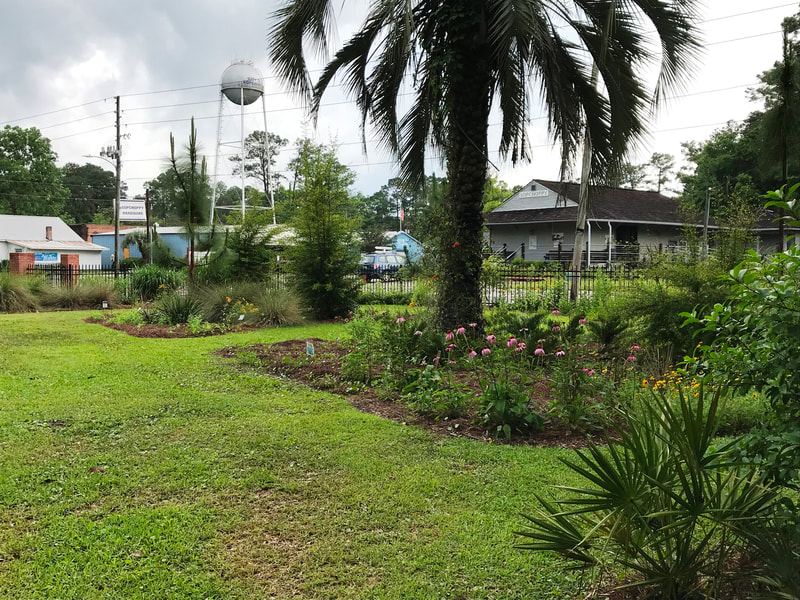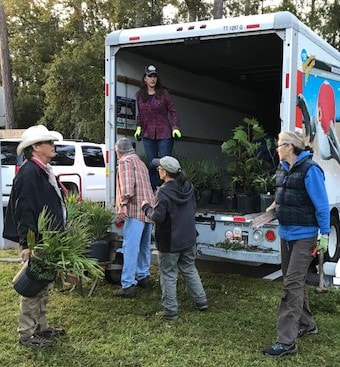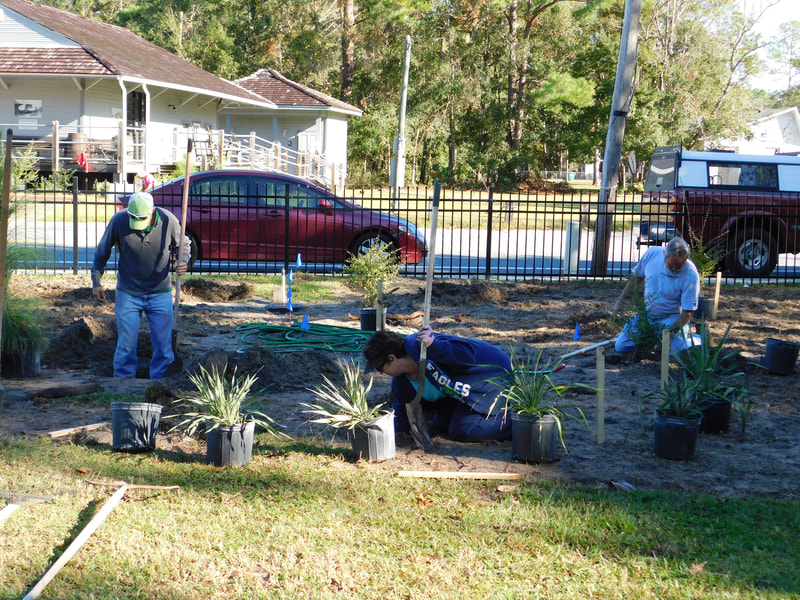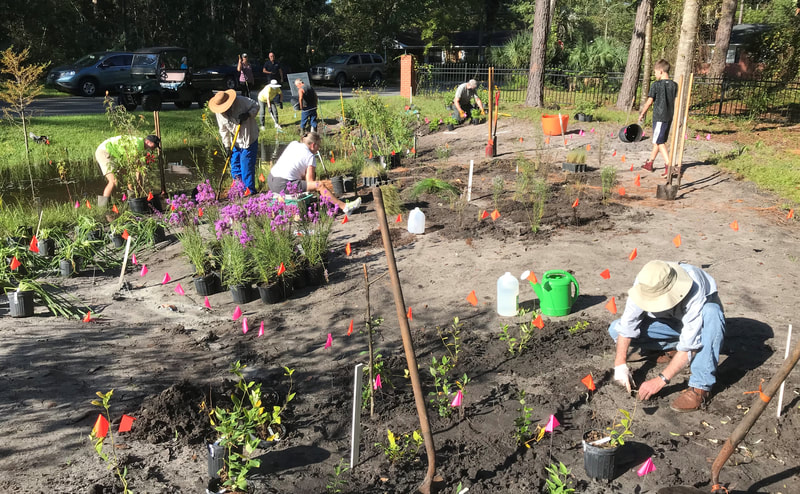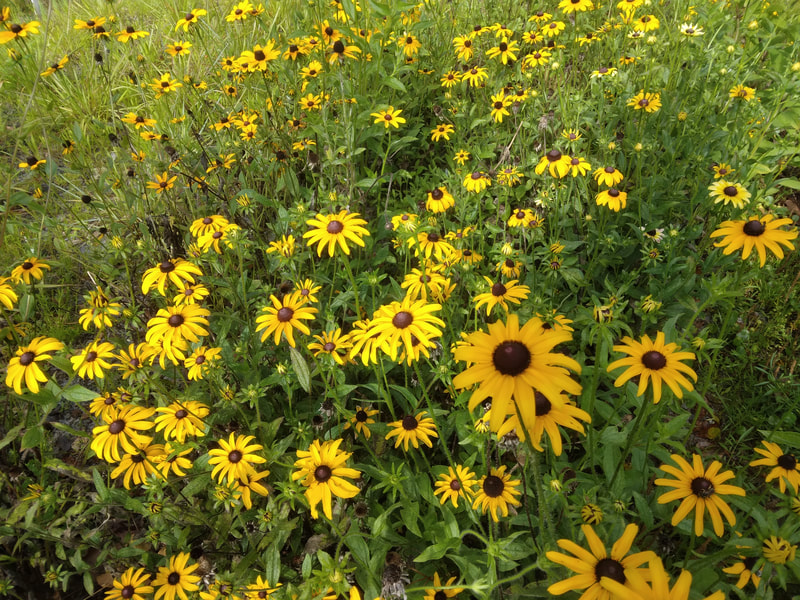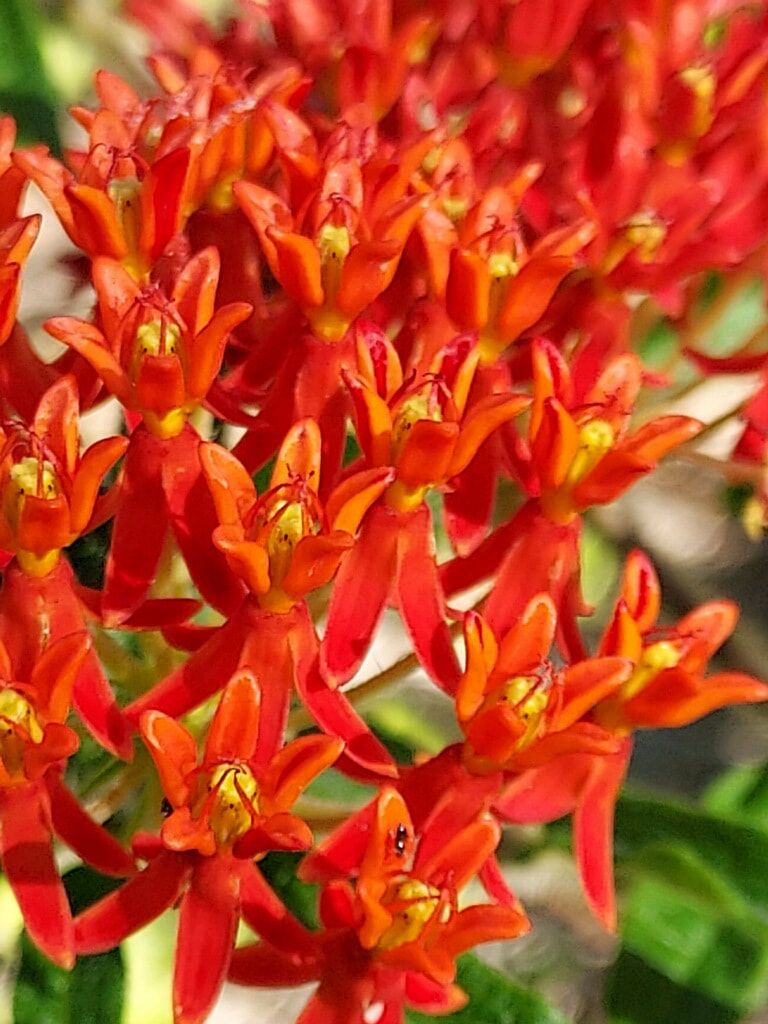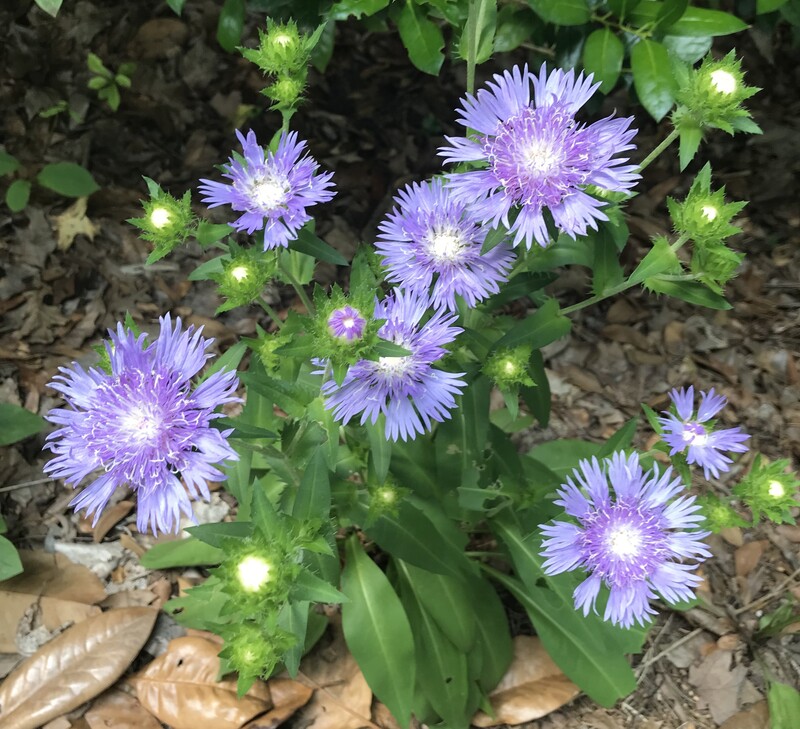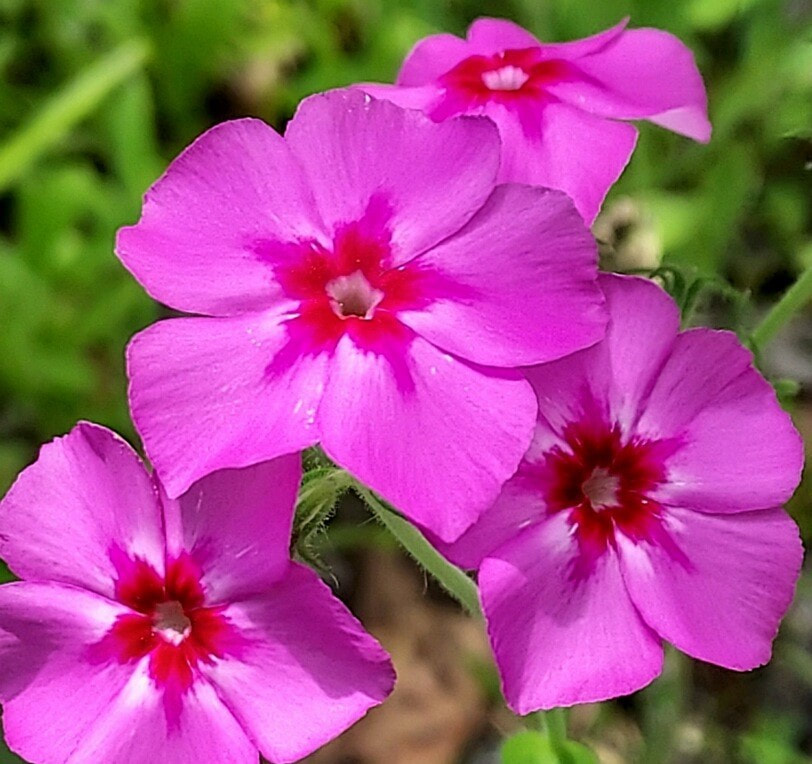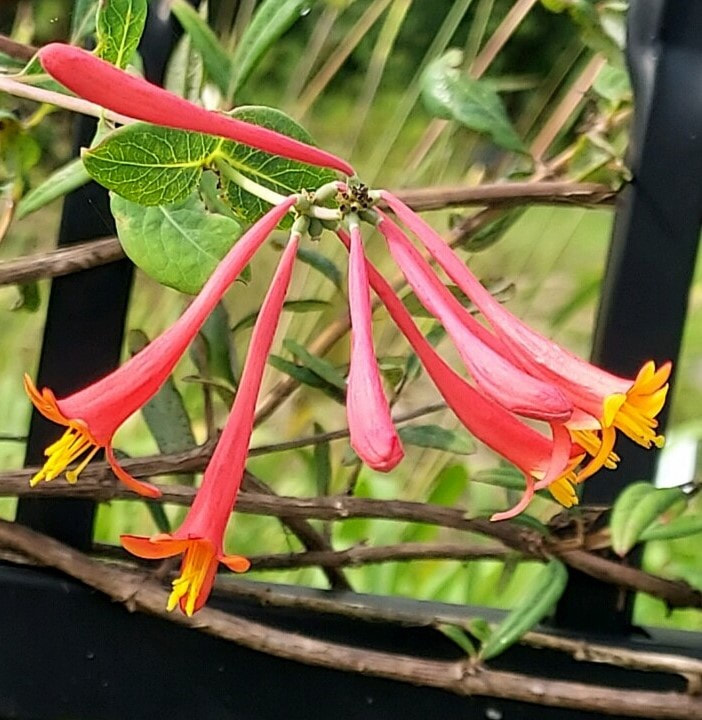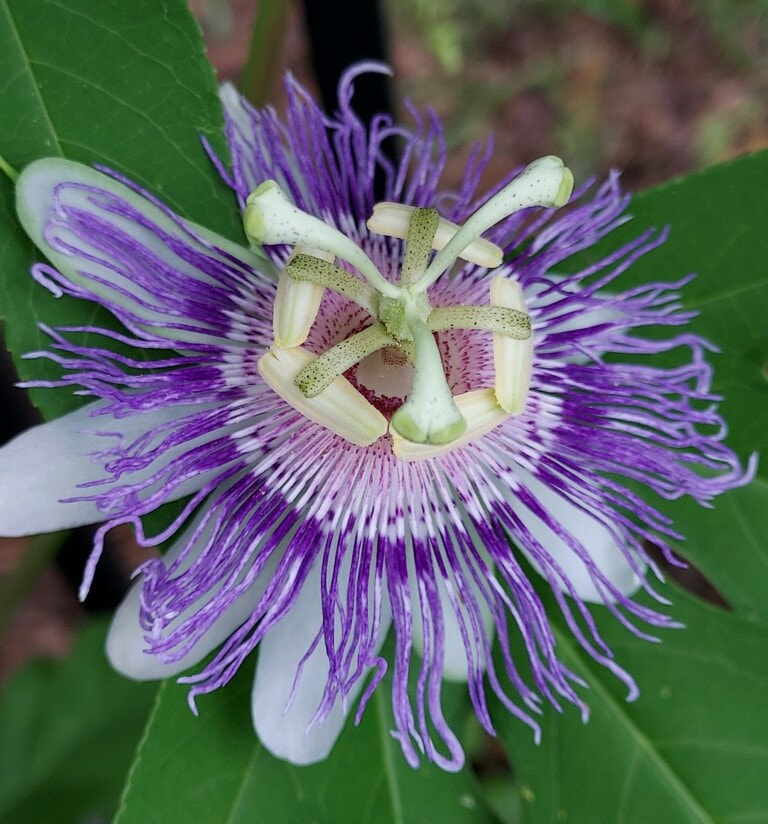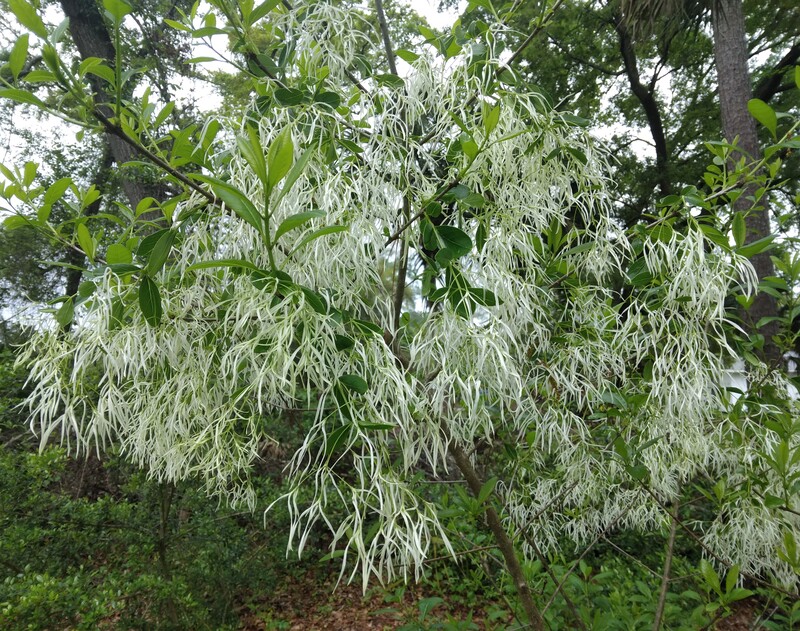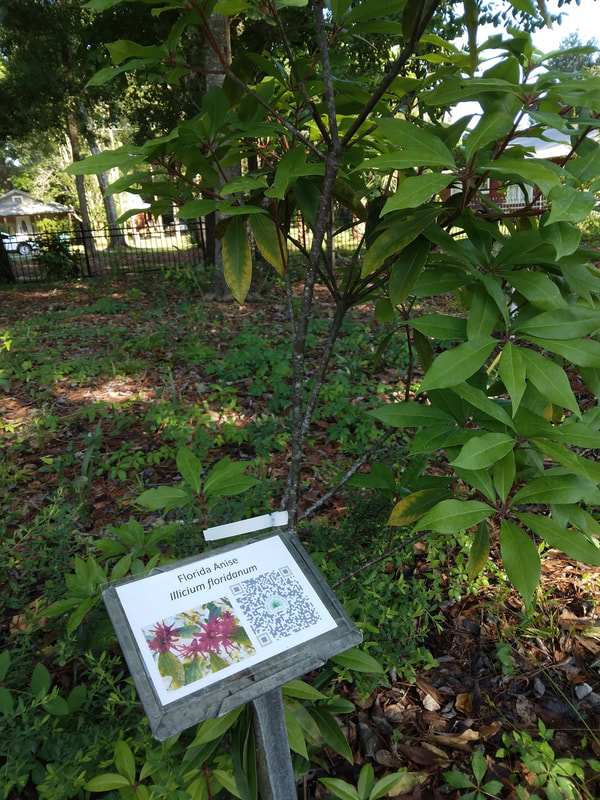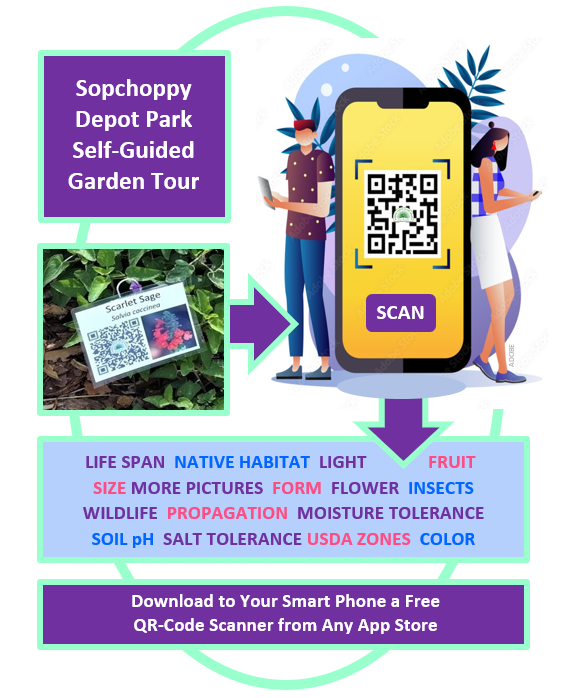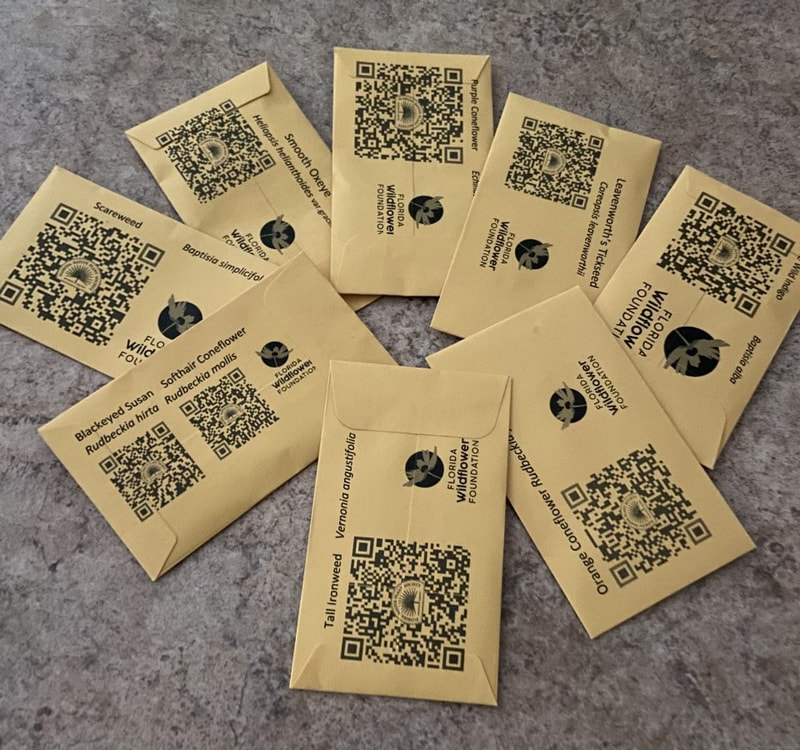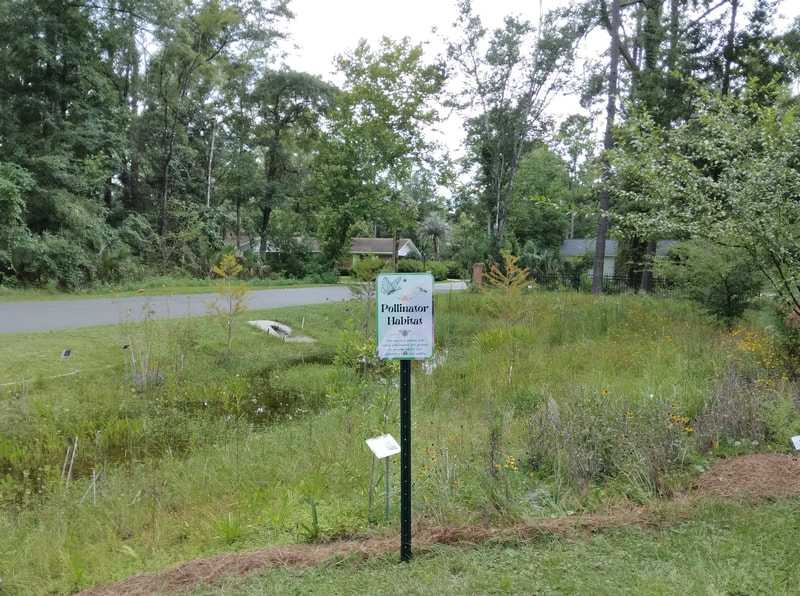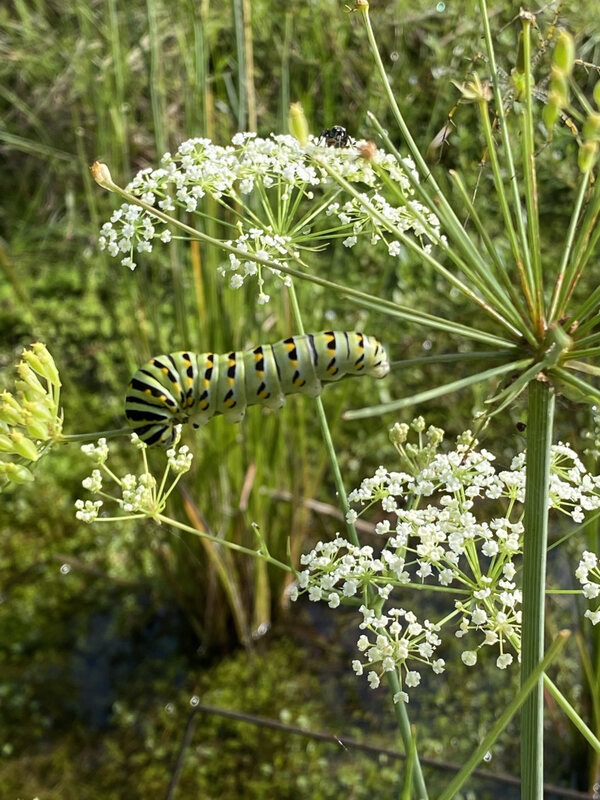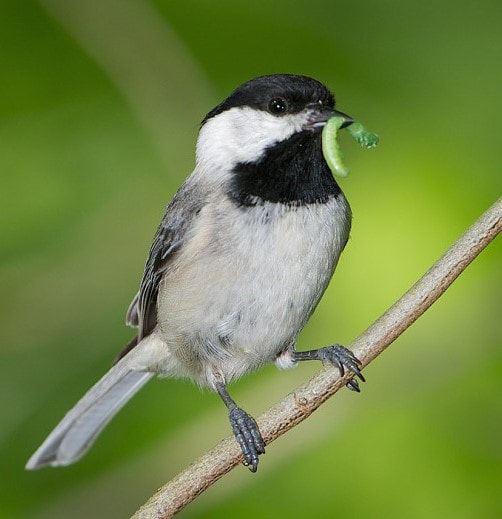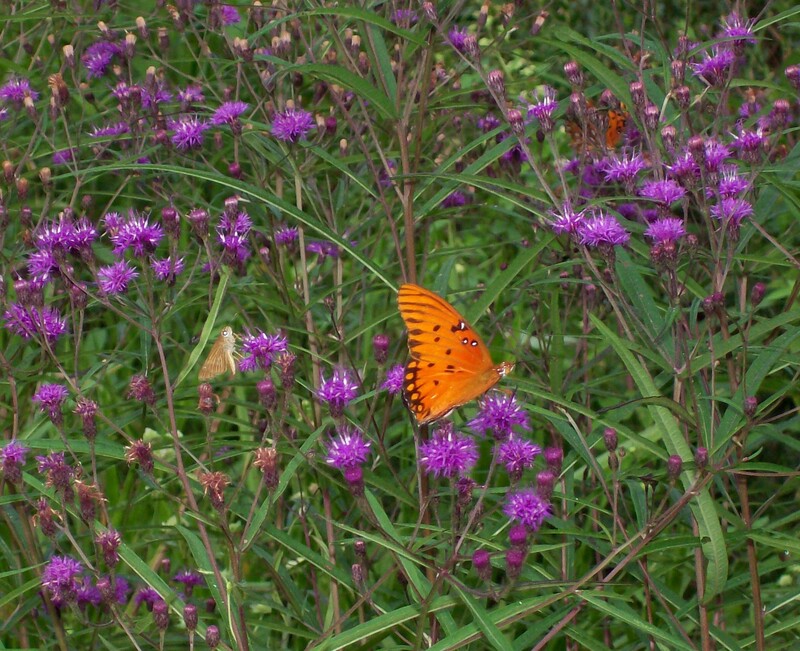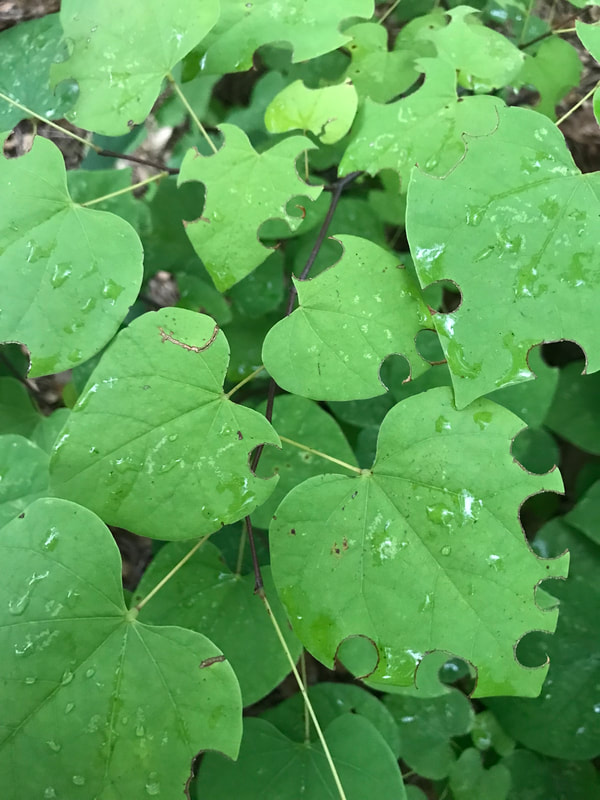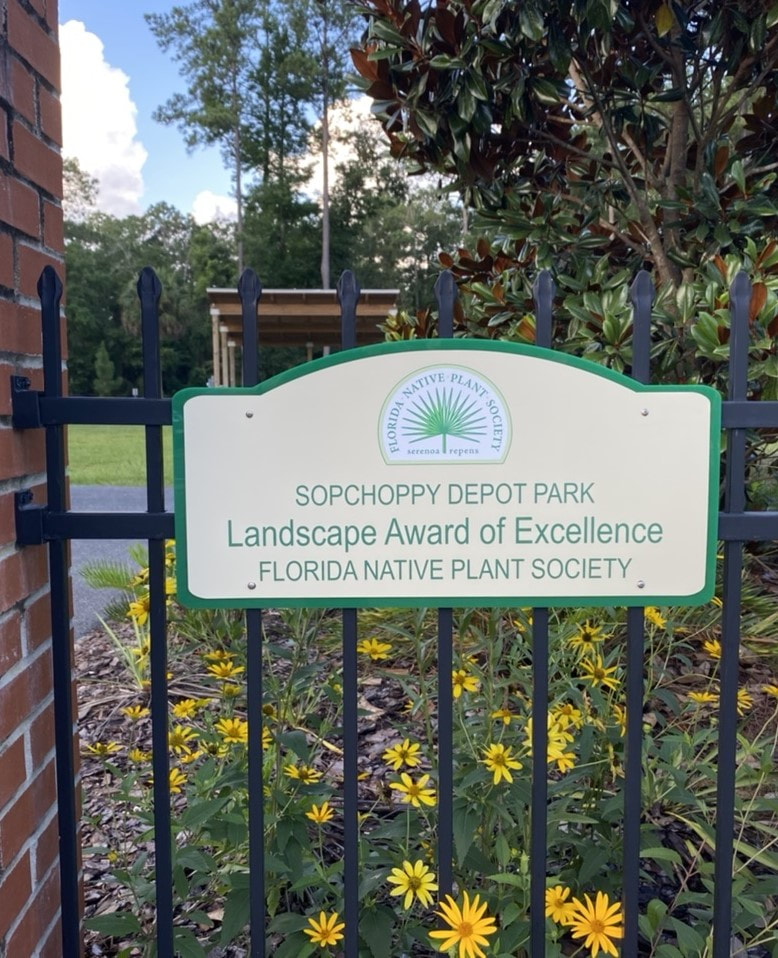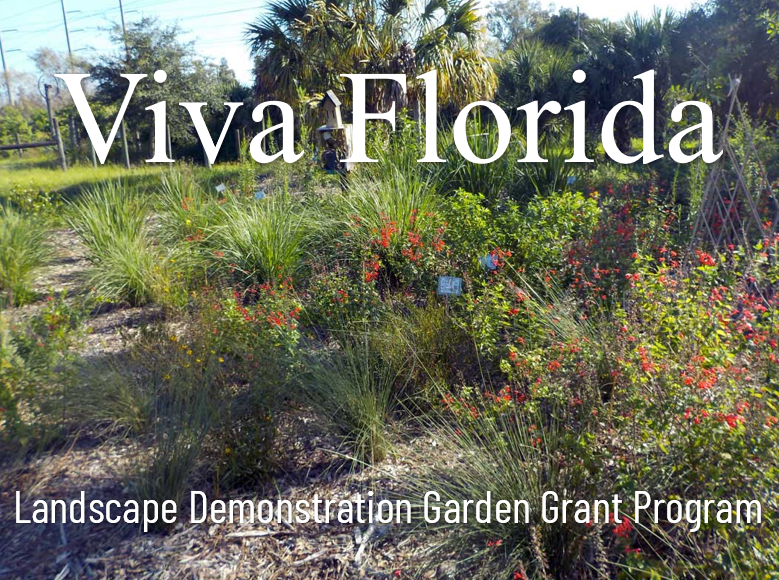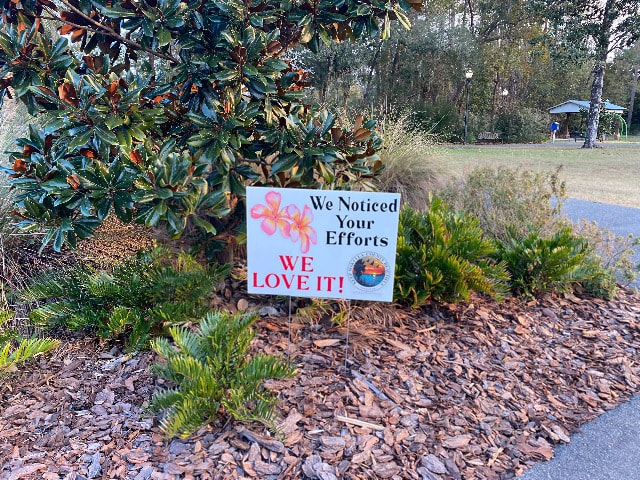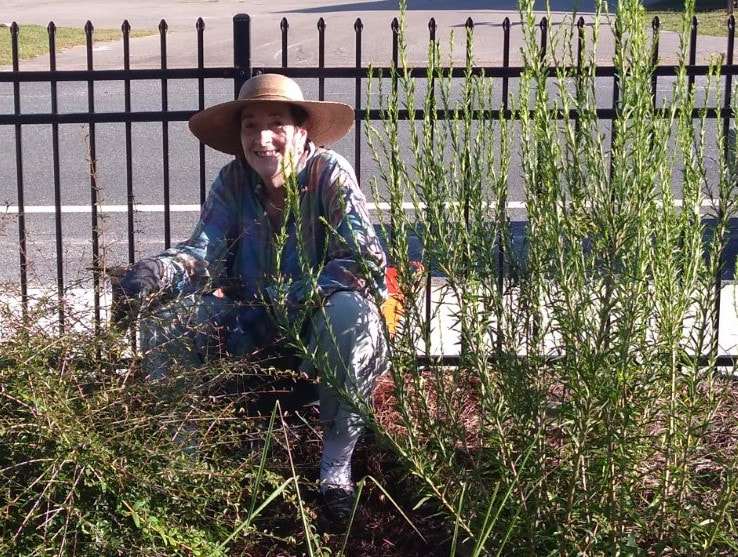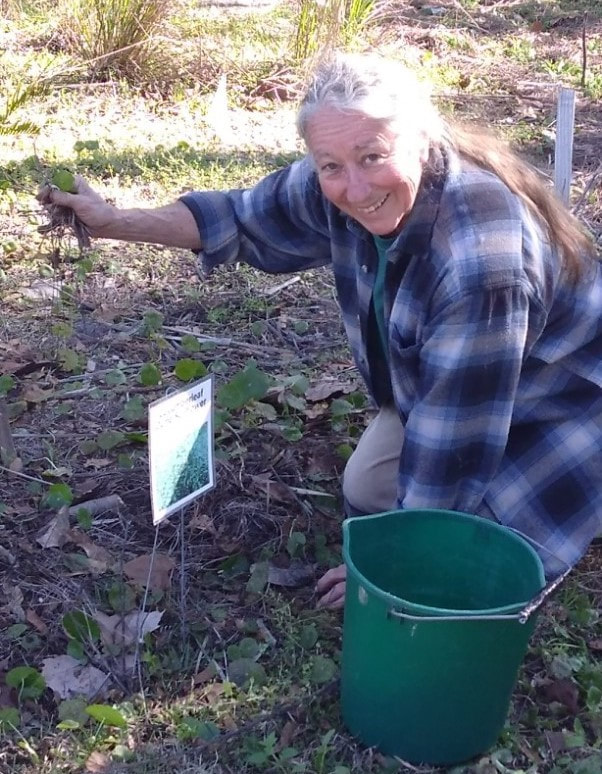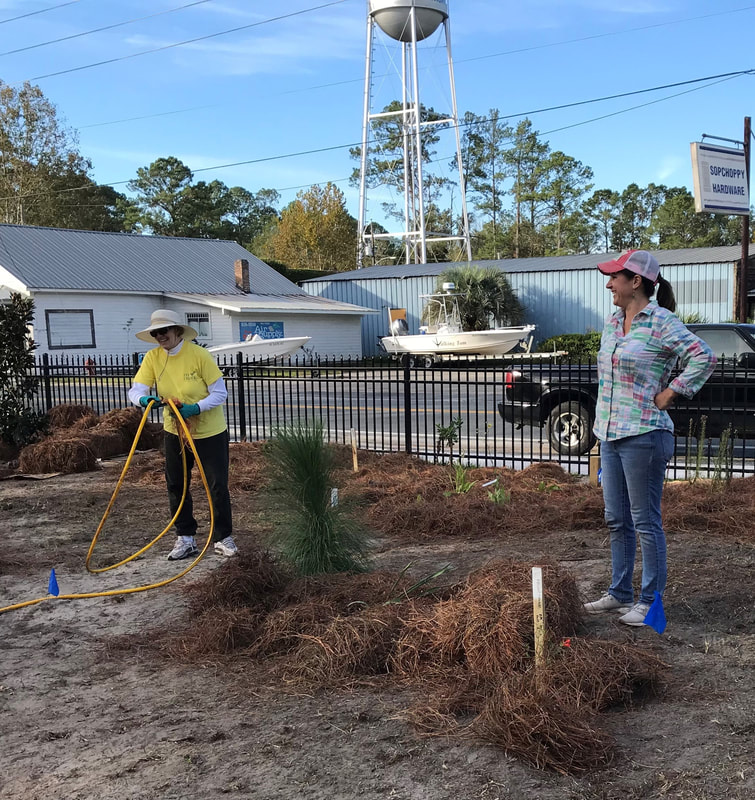Sopchoppy Depot Park (33 Rose Street)
Sopchoppy Depot Park is a charming 1.7-acre park in the heart of Sopchoppy across from the historic depot. Open daily from dawn to dusk, the park features a walking path, a children’s playground, 2 picnic pavilions, a music stage, and award-winning native plant landscaping. Depot Park hosts Sopchoppy’s annual Worm Gruntin’ Festival, Christmas in Sopchoppy, and monthly community markets.
Rental Fees: Small Pavilion: $30 | Large Pavilion: $40 | Rental (>75 people): $200 + $200 Deposit
Vendor Fees: $10 each
Rental Fees: Small Pavilion: $30 | Large Pavilion: $40 | Rental (>75 people): $200 + $200 Deposit
Vendor Fees: $10 each
Click any picture below for a larger view or to view pictures as a slideshow.
To see captions, hover over or click on a photo.
Scroll further down for even more information and photos of Sopchoppy Depot Park.
To see captions, hover over or click on a photo.
Scroll further down for even more information and photos of Sopchoppy Depot Park.
Hover over the sections below and click the (+) to expand the section in order to explore the park further.
Park History
Robert and Joy Beasley donated 3 lots to the City of Sopchoppy in 2012 and the city acquired a 4th. The Genesis Group created a concept plan for the park. Mayor Lara Edwards oversaw site preparation and installation of the park hardscape from 2016-2019. Starting in 2018, a team of volunteers landscaped the park with native plants. Garden designer Betsy Smith drew the landscape plan. David Roddenberry chose native plants that grew in the area historically. Volunteers planted hundreds of plants over 4 years. Uncommon plants were grown from seeds collected in the wild. Members of the Sarracenia Chapter of the Florida Native Plant Society (FNPS) provide major volunteer support (visit their site).
Native Plants You Can Find in the Park
Depot Park is home to more than 120 species of native plants, incredible diversity within a small park. Visitors will find:
- A bog garden with hooded pitcher plants, dew threads, and bog buttons.
- A 2,000 square-foot wildflower meadow.
- Six species of milkweed and milkvine for monarch caterpillars.
- An oasis of wetland plants in and around the stormwater pond. See scarlet hibiscus, buttonbush, dahoon holly, blue flag iris, spider lilies, zephyr lilies, cardinal flower, and more.
- Sunny upland wildflower beds dense with coreopsis, black-eyed Susan, starry rosinweed, cucumberleaf dune sunflower, liatris, ironweed, stokes aster, false rosemary, soft green eyes, goldenrod, spotted beebalm, scareweed, wild white indigo, coral bean, and more.
- Shadier areas with woodland phlox, Indian pinks, Carolina petunia, blue mist flower, violets, white crownbeard, southern wood fern, and southern shield fern.
- Vines on the front fence, pavilion columns, and climbing up trees that include coral honeysuckle, passionflower, American wisteria, cross vine, climbing aster, swamp leather flower and Carolina jessamine.
- Native trees such as flatwoods plum, red buckeye, ashe magnolia, chinquapin, hop tree, fringe tree, redbud, bald cypress, black gum, American elm, American holly, southern magnolia, red cedar, live oak, and longleaf pine.
- Native shrubs such as pinxter azalea, sparkleberry, elderberry, Florida anise, sassafras, oakleaf hydrangea, Walter’s viburnum, beautyberry, yaupon holly, wax myrtle, and winged sumac.
- Native grasses such as Fakahatchee grass, muhly grass, purple love grass, lopsided Indian grass, and wiregrass.
- Native palms such as cabbage palm, needle palm, saw palmetto, Adam’s needle, and coontie.
Take a Self-Guided Garden Tour
- Use a QR-code scanner app installed on your smart phone. (Download one free from any app store.)
- Walk through the park. Look for the identification sign of any plant that interests you. Each sign shows a plant’s scientific & common name, a color photo, and its unique QR code.
- Scan each QR code to find interesting information about that plant. Learn where it grows, preferred conditions, which caterpillars need it for food (larval host), and how it benefits other wildlife.
- The QR codes link to the Florida Native Plant Society (FNPS) website and other well-respected resources.
Get Free Wildflower Seeds from the Seed DEPOT
Free seeds collected from park wildflowers are available to all park visitors. The seeds are easy to grow. Search for a miniature replica of the Sopchoppy Depot. On a post beside the garden path, you’ll find the Seed Depot. Look inside for:
- Information on the importance of having native plants in your yard.
- Packets of native plant seeds with planting and care instructions. Please take a seed packet or two for your own garden.
- Brochures from the Florida Native Plant Society and the Florida Wildlife Foundation which provide access, via the web and through membership, to information and expert advice on native wildflowers.
Why Are Native Plants So Important?
Native plants preserve life and biodiversity. Native plants are the ecological basis upon which nearly all life depends, including people. Native ecosystems have become fragmented and largely converted to lawns with exotic ornamental plants. The human-dominated landscape no longer supports functioning ecosystems, and preserved natural areas are not large enough to support wildlife.
Each of us can make a difference by planting native plants. For butterflies, native plants support 35 times more caterpillar mass than non-native plants. Native oaks support more than 500 species of caterpillars whereas ginkgo, a landscape tree from Asia, hosts only 5 caterpillar species. When it takes over 6,000 caterpillars to raise one brood of chickadees, that makes a difference.
Native plants provide a sense of place and sustain the wildlife we love to see. They provide nectar for pollinators including native bees, butterflies, moths, hummingbirds, and bats. They provide protective shelter for many mammals. The nuts, seeds, and fruits they produce provide essential foods for all kinds of wildlife. Other benefits include beauty, low maintenance, water conservation, supporting agriculture, helping to combat climate change, and creating a healthier place for your family and community.
By planting natives in your yard, each yard becomes part of a collective effort to provide habitat for wildlife known as the Homegrown National Park. Even minor increases in native vegetation can have a large effect. By increasing visibility and demand for native plants, we can all help to rescue native plants and animals from potential extinction.
Each of us can make a difference by planting native plants. For butterflies, native plants support 35 times more caterpillar mass than non-native plants. Native oaks support more than 500 species of caterpillars whereas ginkgo, a landscape tree from Asia, hosts only 5 caterpillar species. When it takes over 6,000 caterpillars to raise one brood of chickadees, that makes a difference.
Native plants provide a sense of place and sustain the wildlife we love to see. They provide nectar for pollinators including native bees, butterflies, moths, hummingbirds, and bats. They provide protective shelter for many mammals. The nuts, seeds, and fruits they produce provide essential foods for all kinds of wildlife. Other benefits include beauty, low maintenance, water conservation, supporting agriculture, helping to combat climate change, and creating a healthier place for your family and community.
By planting natives in your yard, each yard becomes part of a collective effort to provide habitat for wildlife known as the Homegrown National Park. Even minor increases in native vegetation can have a large effect. By increasing visibility and demand for native plants, we can all help to rescue native plants and animals from potential extinction.
Depot Park Awards
May 2021 – The Florida Native Plant Society (FNPS) awarded Sopchoppy Depot Park the 2021 Award of Excellence for Institutional Landscapes. The award is for a high-quality native plant landscape in an institutional setting such as a public site, government entity, church, or school. Criteria for FNPS landscape awards involve the creation or maintenance of species diversity, on-site preservation of existing native plants, relationships to local native plant communities, and an educational component benefiting visitors to the site. The award of excellence is the highest award. Among other winners in recent years are Florida Gulf Coast University (Ft. Myers) and Archbold Biological Station (Lake Placid).
May 2021 – The Florida Wildflower Foundation (FWF) awarded a Viva Florida Landscape Demonstration grant to the City of Sopchoppy. This grant program helps parks, nature centers, and other public spaces purchase Florida native wildflowers to showcase the beauty of Florida natives and demonstrate their use in landscapes.
April 2022 – Keep Wakulla County Beautiful (KWCB) chose Sopchoppy Depot Park for a beautification award.
May 2021 – The Florida Wildflower Foundation (FWF) awarded a Viva Florida Landscape Demonstration grant to the City of Sopchoppy. This grant program helps parks, nature centers, and other public spaces purchase Florida native wildflowers to showcase the beauty of Florida natives and demonstrate their use in landscapes.
April 2022 – Keep Wakulla County Beautiful (KWCB) chose Sopchoppy Depot Park for a beautification award.
volunteer at Depot Park
How to Volunteer to Help the Gardens at Depot Park
The 1st Saturday of every month is a scheduled workday at Sopchoppy Depot Park.
Simply show up and join other volunteers around 9:00 am. Work as long or as little as you want.
Volunteer tasks include picking up limbs, weeding, mulching, watering, training vines, and pruning.
Bring gardening gloves and gardening tools (e.g., trowels, pruning shears, empty containers).
To receive volunteer emails & workday reminders, please send your email address to: [email protected]
If you want to help with any of the specific activities below, please indicate your interest and send your email address to: [email protected]
High school students may earn Bright Futures hours by volunteering at Sopchoppy Depot Park.
Hours may be earned at monthly workdays or through summer internships.
Interested students should send their cell phone # & email address to: [email protected]
The 1st Saturday of every month is a scheduled workday at Sopchoppy Depot Park.
Simply show up and join other volunteers around 9:00 am. Work as long or as little as you want.
Volunteer tasks include picking up limbs, weeding, mulching, watering, training vines, and pruning.
Bring gardening gloves and gardening tools (e.g., trowels, pruning shears, empty containers).
To receive volunteer emails & workday reminders, please send your email address to: [email protected]
If you want to help with any of the specific activities below, please indicate your interest and send your email address to: [email protected]
- Propagating garden plants from seeds or cuttings (for later planting in the park & plant giveaways)
- Planting & transplanting plants in the gardens on spring and fall planting days
- Seed Library (e.g., collecting & packaging seeds, monitoring & restocking the seed library)
- Searching for and removing invasive species
- Adopting one area of the park as yours to maintain (on your own schedule)
- Photographing the gardens, park plants in bloom, and pollinators at work – and sharing your photos
- Writing articles about the park and its plants for local newspapers and social media
- Donating native plants to the gardens
High school students may earn Bright Futures hours by volunteering at Sopchoppy Depot Park.
Hours may be earned at monthly workdays or through summer internships.
Interested students should send their cell phone # & email address to: [email protected]

